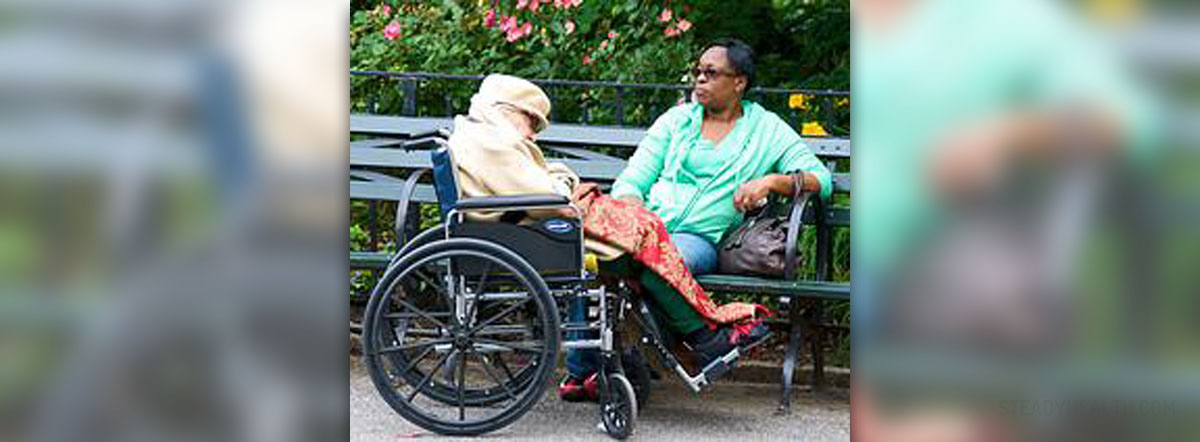
Occupational therapy is a form oftreatment and therapy which focuses on helping people learn how tomanage performing daily activities in life without any problems,regardless of the form of illness or disability they might besuffering from.
Therefore, occupational therapists dealwith a wide variety of patients and work in nursing homes, livingfacilities, adult daycare centers and community senior centers.
Elderly Patients with OccupationalTherapy
Before he/she can help an elderlyindividual, a therapist always starts the treatment process with anevaluation of the condition of the patient. Then, according to theneeds of the affected individual him/herself, the therapy can takemany of the following forms.
Basically, occupational therapy canteach a person with arthritis how to conserve the strength of his/herjoints and manage to protect these parts of the body. Furthermore,this therapy can be of assistance to anyone who suffers from certainconditions which result in a reduced range of motion. These peopleare treated through stretching exercises and during the therapy manyprops like sponges with handles are used.
Another situation where this formof therapy is bound to prove useful is helping people withamputated limbs learn how to put their prosthetic limbs on and takethem off, as well as how to take care of both their body and theseforms of adaptive equipment.
As far as people with vision problemsare concerned, occupational therapy will help them learn how to avoidglare and focus on increasing the color contrast of the environmentthey observe.
Finally, this therapy will help peoplesuffering from memory impairments by teaching them how to organizethemselves better and use notes, tables and many other forms ofreminders for motivation and management of all daily activities theymight participate in.
Yet, due to lack of proper informationthat people receive regarding this therapy, they commonly believethat occupational therapy is the same as physical therapy. Naturally,this is incorrect. Simply, physical therapy focuses on increasing aperson's mobility after he/she has undergone a debilitating injury orillness while occupational therapy tries to teach these people how toovercome the impairments they have and perform their daily activitieswithout problems. Therefore, while an occupational therapist treats aperson with a physical deformity such as a fractured hip, who will after thetherapy learn how to use assistive handles in order tomanage to move around his/her dwelling, a physical therapist willfocus on making this person capable of climbing the stairs.
Furthermore, in cases of memory lossissues that a person may be suffering from, the occupationaltherapist will assess the level of this problem and developthe best treatment once he/she obtains the necessary information. Thetreatment may involve making the home of the patient absolutely safe.Additionally, the remaining cognitive and memory skills of thepatient need to be used maximally, making it possible for thisindividual to lead a productive life. Also, the occupational therapyis directed towards the caregivers too, teaching them how to providesocial and emotional assistance during group treatments, respite careand similar forms of therapy.
All in all, occupational therapy takesa whole previous life experience of the patient into consideration,helping him/her to achieve all the things him/her was previouslycapable of, overcoming the effects of an injury or a disease. It ismostly directed towards elderly patients as they are frequently theones suffering from the above mentioned physical and mental conditions.
Benefits of Occupational Therapy
Even though the elderly are consideredto be the most common patients involved in occupational therapy, thisdoes not always need to be so. Rather, a person may be assessed interms of his/her school performance and necessities, workplace,hospital or any other place of living and working.
Thus, depending on the place where thepatient spends most time in, the form of therapy may vary and havedifferent benefits. For example, in case of younger children,the occupational therapy focuses on the physical and motor abilitiesof the child, his/her awareness of the body and his/her day to dayactivities such as schoolwork, writing, speaking and other skills ofthis type, using the toilet, eating, as well as playing with otherchildren and interacting with the world around him/her. So, thistherapy helps children manage all these things successfully.
As far as adolescents are concerned,occupational therapy focuses on helping them manage to grow on apersonal level, improving their self-esteem and developing theirimportant social skills.
In case of the elderly and adults,this therapy is usually directed towards a treatment of certaindisabilities, regardless whether these take place on a psychological,physical or some other levels. Basically, occupational therapy helpspeople overcome most of the difficulties their health problems forcethem to have. Therefore, the benefits of such treatment areinvaluable.
Occupational therapy is different froma physical one since it focuses on improving a patient's lifestyle,regardless of the impairments he/she might have. Physical therapy, onthe other hand, focuses on helping people recover from theirinjuries, while every other aspect of their recuperation is commonlyhandled thorough occupational therapy.

















Your thoughts on this
Loading...